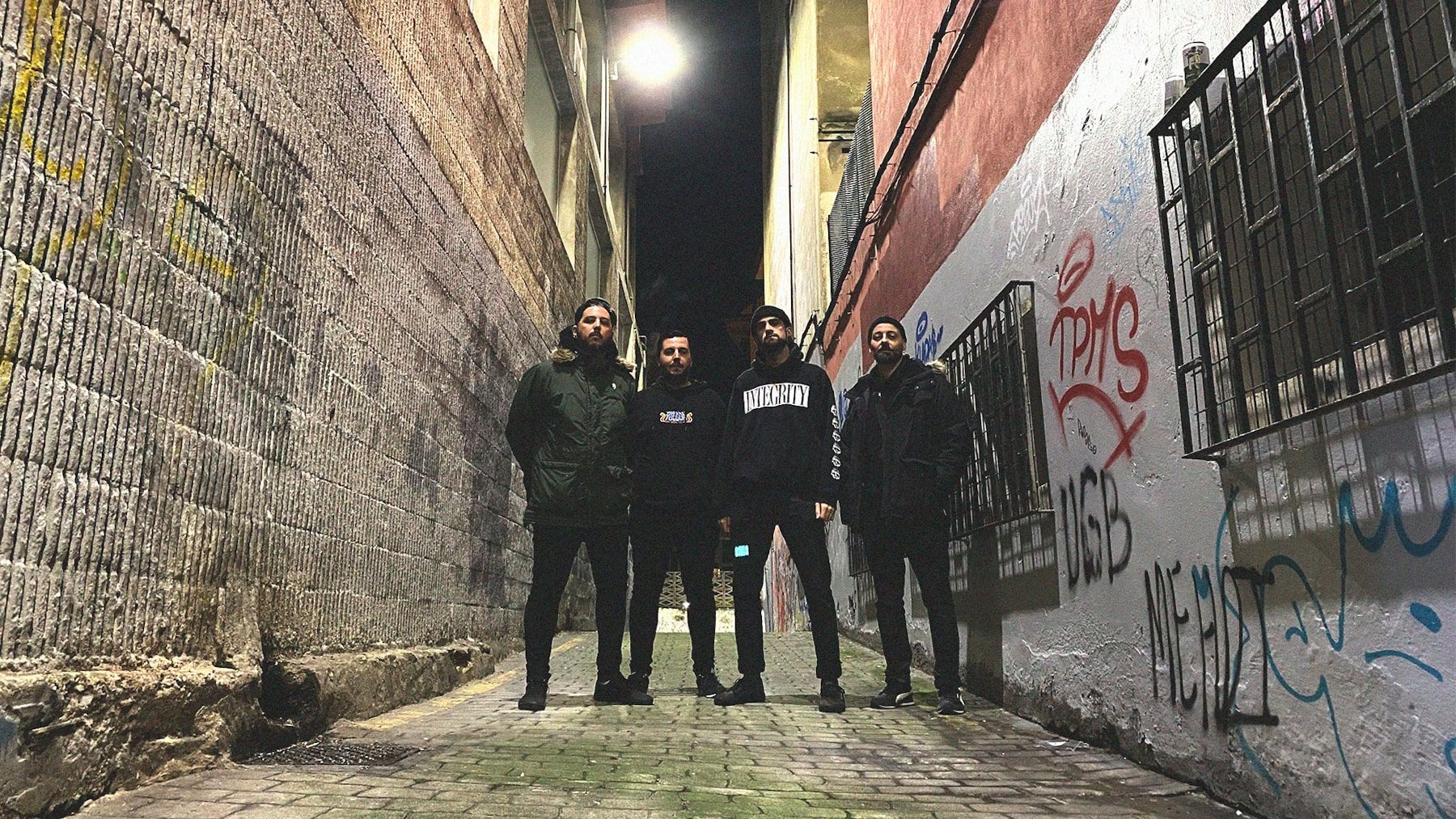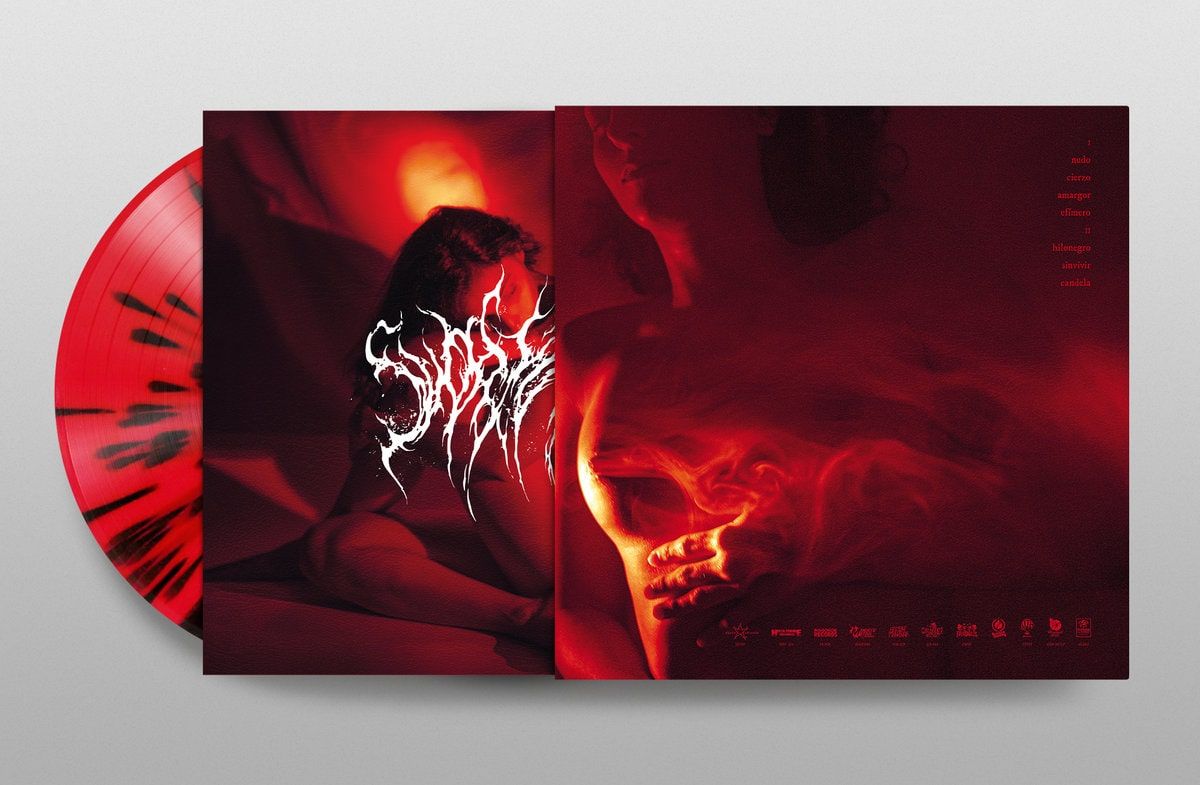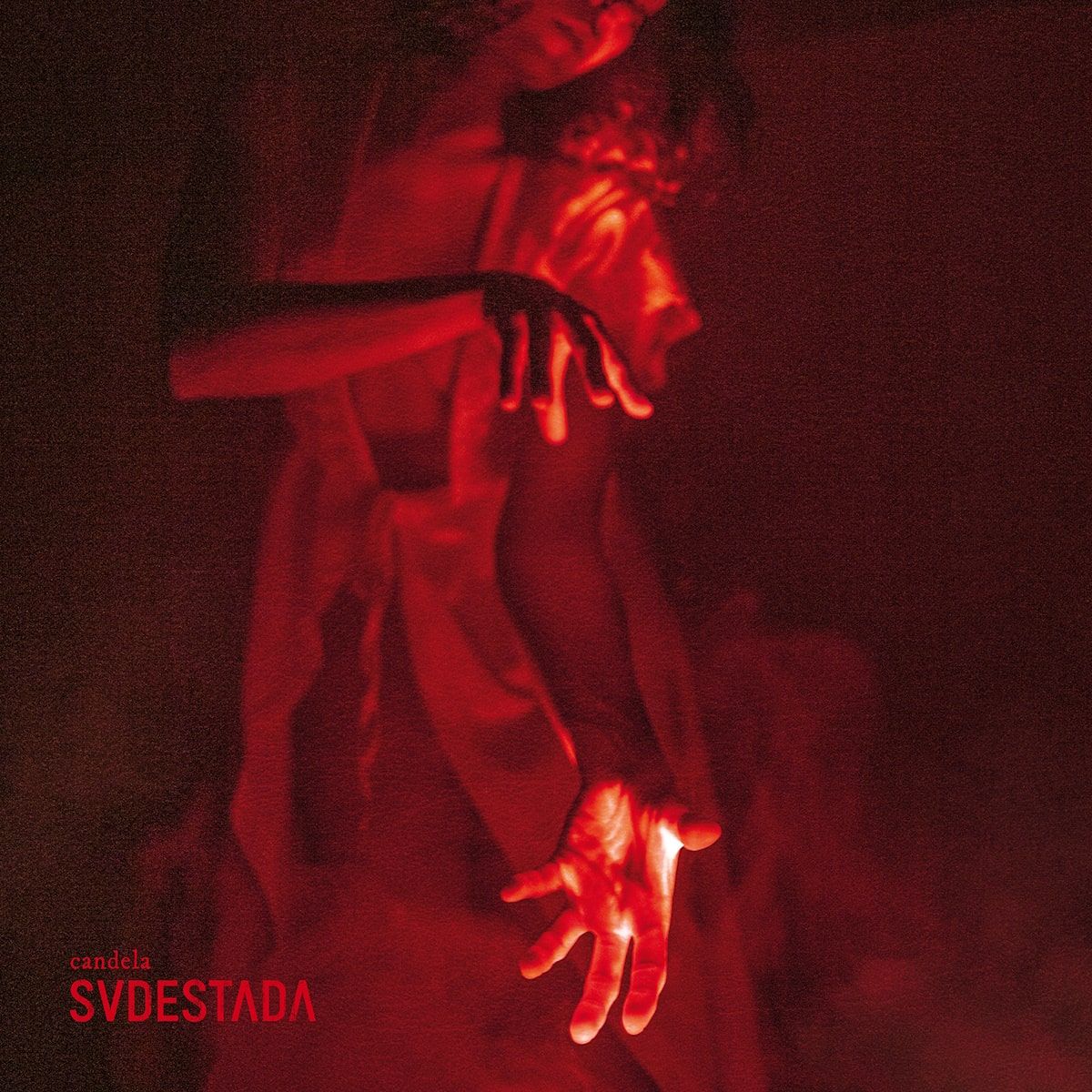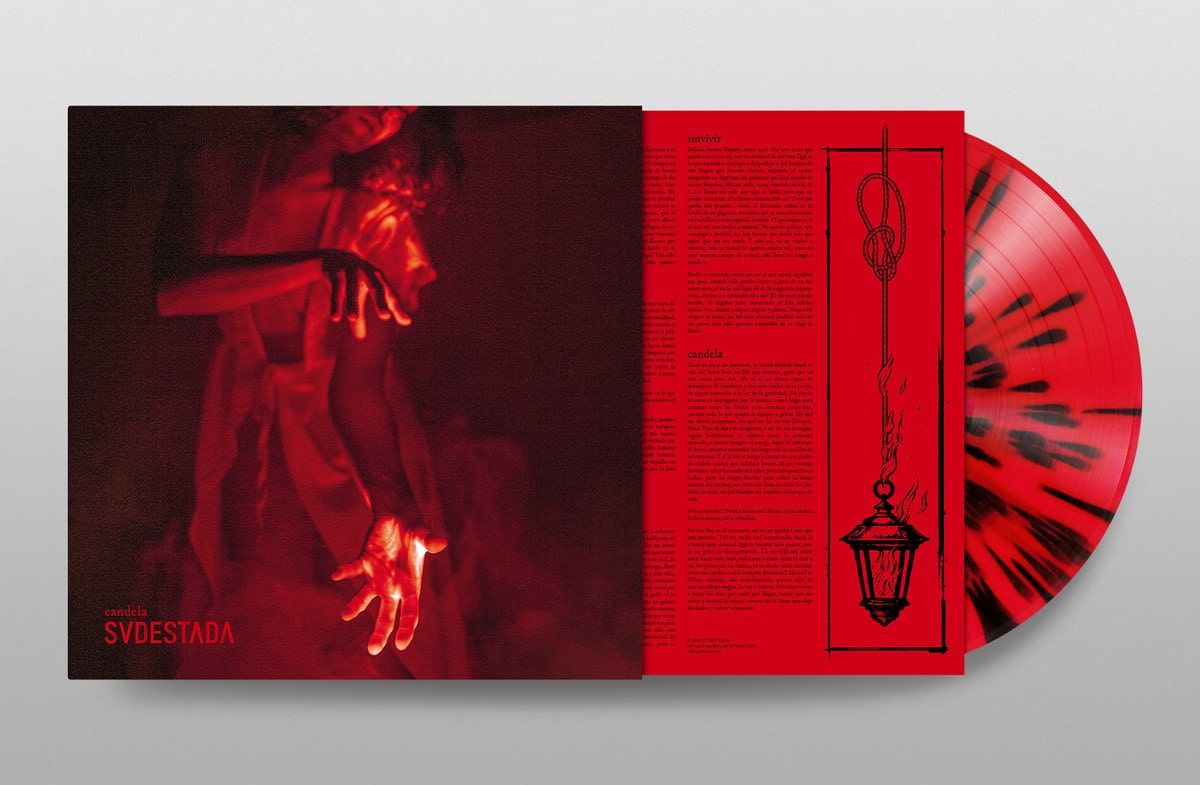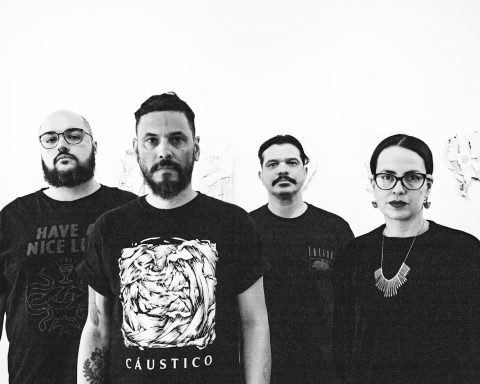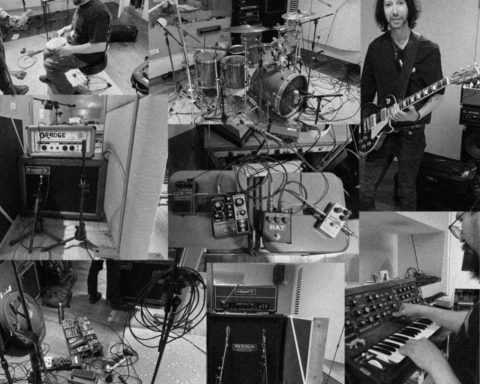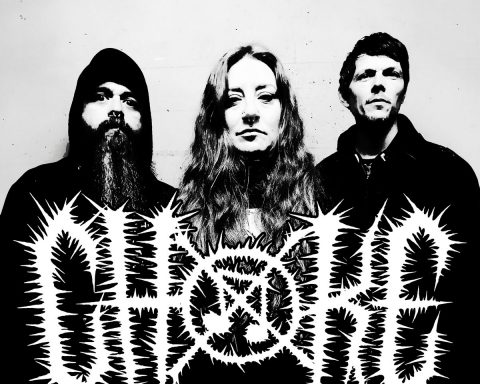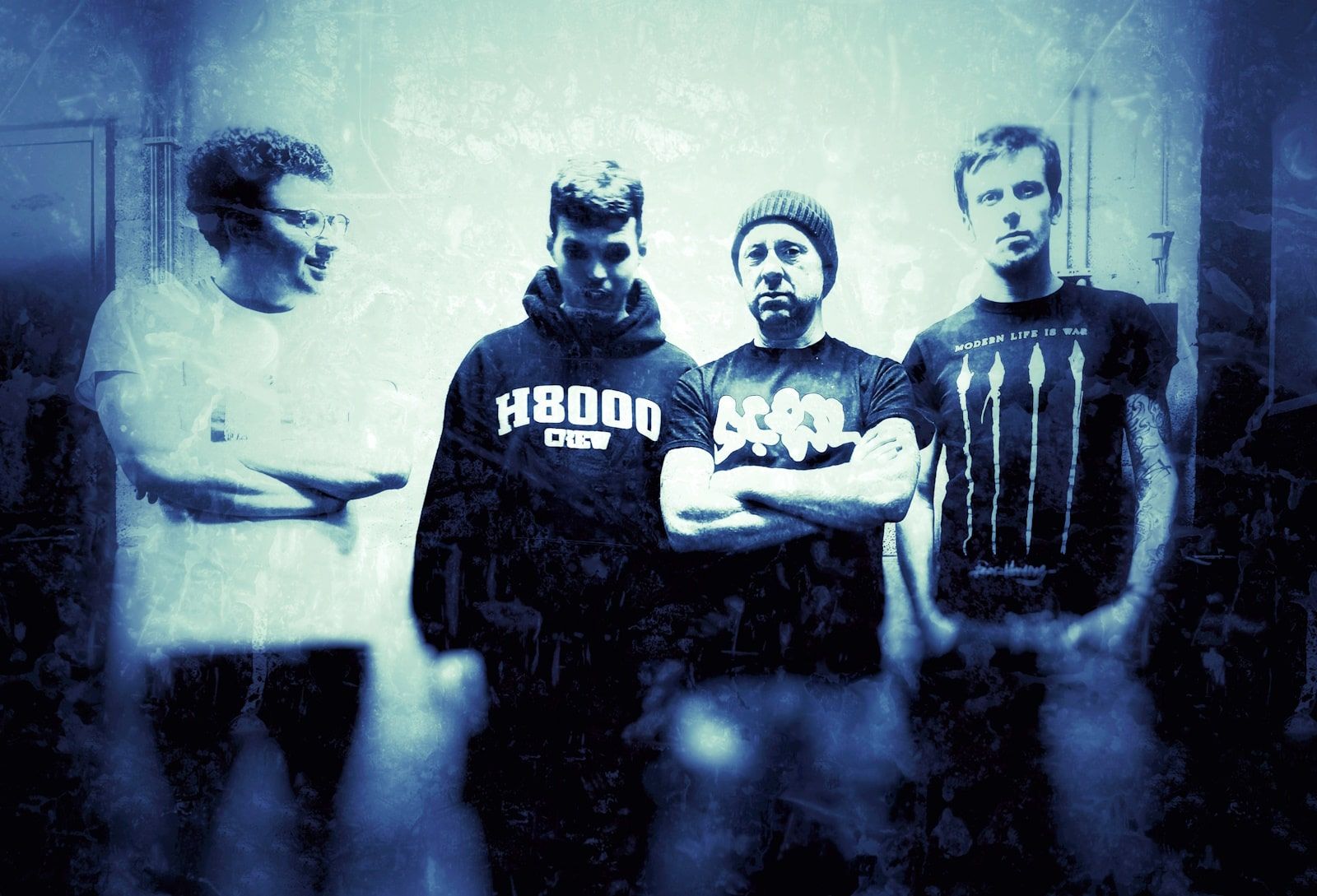Madrid’s own SVDESTADA shook the foundations of the crust punk and blackened post hardcore with their latest album “Candela.” Since their inception, the band has been a beacon of innovation, steering clear of the well-trodden paths of revivalism. “Candela” is their testament to this ethos, a seven-track saga that delves into the harrowing landscapes of the human psyche.
The band, comprising seasoned musicians, channels a maelstrom of influences, creating a sound that is at once familiar and startlingly new.
From the opening strains of ‘Nudo’ to the closing notes of the title track ‘Candela,’ the album is a relentless surge of emotion and intensity. ‘Cierzo’ emerges as a battle cry against the façade and duplicity proliferating in the digital age, while ‘Amargor’ and ‘Efímero’ weave narratives of loss, ephemerality, and the resilience of the human spirit. ‘Hilonegro’ and ‘Sinvivir,’ with their intricate compositions, explore the depths of solitude and the chaos of toxic relationships.
SVDESTADA’s mastery lies in their ability to fuse the raw power of crust punk with the intricate melodies of black metal, creating a sound that is both destructive and delicately nuanced. “Candela,” with its lyrical depth and musical complexity, is a reflection of the band’s journey through the extremes of sound and emotion.
This album, released on Long Legs Long Arms Records and Shove Records, marks a bold declaration of their artistic vision, a journey through the shadows that promises to leave listeners both exhilarated and introspective.
– At today’s detailed music breakdown, we’re diving deep into each track. Below, we’re sharing special commentary from the band on each song, both in English and Spanish.
Nudo (Knot)
We chose this song to open the album because the way it gets in seemed like the perfect way to start, with that drumbeat that grows until it explodes, but also, Nudo is connected with Candela, the closing song, these being the beginning and the end of an assimilation process (the two themes share the same text at the end).
The album is presented as a journey through darkness, a darkness that takes different forms (refusal to accept reality, feeling of abandonment and loneliness, anger and pride as a method of self-defense, mistakes we repeat, etc.), until we are able to see the light once again in the flame that shines within ourselves and we manage to accept and assimilate the circumstances to walk again. Nudo is the starting point, a blockage, a void, a wandering adrift in the darkness without motivation or inspiration; That is why it is a “knot” that we need to untie. Musically, it is a song loaded with melodies that evoke tango, with which Fer grew up in his native Buenos Aires.
Cierzo (North wind)
This is the only different song on the entire album in terms of theme. At Cierzo we intend to stand up against the imposture, the hypocrisy and the professional witch hunters that social networks have brought, who destroy the scene with their envy, their hatred and their poison.
How easy it is to criticize and vomit all your personal frustrations from the mediocre comfort of your room. All of us have been creating “the scene” for more than twenty years, giving hundreds of concerts, starting bands, losing money, being faithful to our values and principles, always upright, for the love of art, music and our philosophy of life. If all you’ve done for this scene is to create an Instagram or Twitter account, think again before you throw your shit at anyone.
Musically it has a more aggressive sound, with more presence of hardcore elements.
Amargor (Bitterness)
Amargor is, as its name suggests, a song full of bitterness. Just as in Cierzo you could glimpse rage and fury in the music, here the melodies evoke melancholy and pain, reinforced by dense blast beats that create an atmosphere of sadness.
This song talks about how people suddenly disappear from your life and communication is completely cut off, leaving you in the dark, with a terrible feeling of abandonment and being unable to understand why. The phrase “I just want to understand it, then let it die” summarizes that feeling, in which one no longer wants to fight about it, simply understand it to be able to turn the page.
Efímero (Ephemeral)
There are two acts musically differentiated in Efímero, one more energetic, full of resigned vitalism, in which the lyrics express the awareness of the “ephemerality” of everything, the amount of wounds we collect, but still we refuse to fall into defeatism and victimhood.
Some of the most luminous melodies on the album are in this song, in addition to one of the few moments of respite, a pause that is followed by a mid-tempo, reaching almost the end, in which the intensity of the music and melody is growing together with a plea for self-pride and personal independence to face adversity.
Hilonegro (Black Thread)
The black thread is the string of verses written on paper, the only possible relief when the cold and loneliness overwhelmed me. With that thread, the artistic expression, I tried to face the fear I felt at that moment, using all that negativity as creative energy (“I unstitch a memory, mend the cold wound on my chest”) until I was able to assume loneliness as the only possible state.
Musically it is a dense song, with especially intricate drums that, however, do not turn it into an accelerated song, but rather make it suffocating until the d-beat enters and breaks epically into a resigned lament (“I gave it all away, the sky and the sea, and to whom can I tell it today”). Just as Efímero contained the brightest melodies on the album, Hilonegro probably has the darkest. Musically it seems to us an evolution of the group towards other possible sounds.
Sinvivir (Angst)
Sinvivir is a tense and rushed song in which the melodies and rhythms become entangled, giving the sensation of being trapped in a kind of whirlwind, the same one that the lyrics describe, a toxic relationship in which two people are trapped (“open me up, let me out, I’m falling behind you”) hurting each other but unable to get out of that loop of wild
feelings, just like a moth circles around a flame until it burns.
For this song we tried overlapping voices, playing several lines in different planes and times, a resource that is not repeated in the rest of the album and that gives it an even more rushed and suffocating air.
Candela (Candle)
Candela is our longest song and it follows the tradition of previous albums, in which we also closed with longer songs that condensed the overall theme of the album. In this case, Candela connects with Nudo, being the conclusion of the journey, and it reveals the light at the end of the tunnel… the light that our own inner fire has. The narrative goes through many thoughts of demotivation, apathy, loneliness and how cold this world can be (“I don’t know if I feel capable of spinning once again in the wheel”).
Musically, it starts with a rhythm of triplets that reminds us of At the Gates and other melodic death metal bands. It goes through different passages (epic melodies, breakdowns, mid-tempos…), to end with a heartbreaking speech in which a certain hope filters through and culminates with the final catharsis that condenses all the emotions of the album into a sad and emotional melody that slowly dissipates. As a curiosity, the instrument that plays the last notes and closes the album is a hurdy-gurdy, traditional from Galicia, where we recorded the album.
A few days before going there to record it, our producer Iván Ferro was recording a traditional Galician folklore band and when we saw their videos we asked him if Manuel María, the musician who played the hurdy-gurdy, could record a line for Candela. We already used an Argentine bandoneon in Azabache and we wanted to use a similar resource again.
Spanish version:
Nudo
Elegimos este tema para abrir el disco porque la manera en que arranca nos parecía la forma perfecta de comenzar, con ese redoble que va creciendo hasta estallar, pero además, Nudo está conectado con Candela, el tema de cierre, siendo estos el principio y el final de un proceso de asimilación (los dos temas comparten el mismo texto al final). El disco está planteado como un viaje a través de la oscuridad, una oscuridad que va tomando diferentes formas (incapacidad para aceptar la realidad, sensación de abandono y soledad, rabia y orgullo como método de autodefensa, errores que repetimos, etc.), hasta que de nuevo somos capaces de ver la luz de la llama que brilla dentro de nosotros mismos y conseguimos aceptar y asimilar las circunstancias para volver a caminar. Nudo es el punto de partida, un bloqueo, un vacío, un vagar a la deriva en las tinieblas sin motivación ni inspiración; por eso es un “nudo” que necesitamos deshacer. Musicalmente es un tema cargado de melodías que evocan al tango, con el que Fer creció en su Buenos Aires natal.
Cierzo
Este es el único tema diferente en todo el disco en cuanto a temática. En Cierzo pretendemos plantarnos ante la impostura, la hipocresía y los cazadores de brujas de oficio que han traído las redes sociales, que destruyen la escena con sus envidias, sus odios y su veneno. Qué fácil resulta criticar y vomitar todas las frustraciones personales desde la comodidad mediocre de tu habitación. Todos nosotros llevamos más de veinte años creando escena, dando cientos de conciertos, montando bandas, perdiendo dinero, siendo fieles a nuestros valores y principios, siempre íntegros, por amor al arte, a la música y a nuestra filosofía de vida. Si todo lo que has hecho por esta escena es abrirte una cuenta de Instagram o Twitter, piénsatelo antes de echar mierda sobre nadie. Musicalmente tiene un sonido más agresivo, con más presencia de elementos del hardcore.
Amargor
Amargor es, como su nombre indica, un tema lleno de amargura. Al igual que en Cierzo se podía entrever la rabia y la furia en la música, aquí las melodías evocan melancolía y dolor, reforzadas por blastbeats densos que crean un ambiente de pesadumbre. En esta canción se habla de cómo la gente desaparece de tu vida de repente y se corta por completo la comunicación, dejándote a oscuras, con una terrible sensación de abandono y siendo incapaz de entender el porqué. Las frase “tan solo quiero entenderlo, luego dejarlo morir” resume ese sentimiento, en el que uno no quiere ya pelear por ello, simplemente entenderlo para ser capaz de pasar página.
Efímero
Efímero es un tema en el que musicalmente se diferencian dos actos, uno más enérgico, lleno de vitalismo resignado, en el que soy consciente de lo “efímero” de todo, de la cantidad de heridas acumuladas, pero me niego a caer en el derrotismo y el victimismo. Algunas de las melodías más luminosas del disco están en este tema, además de uno de los pocos momentos de respiro, una pausa a la que sigue un medio tiempo, llegando casi al final, en el que va creciendo la intensidad de la música y la melodía mientras se va recitando un alegato al orgullo propio y la independencia personal frente a la adversidad.
Hilonegro
El hilo negro es la ristra de versos escritos sobre un papel, el unico desahogo posible cuando el frío y la soledad me abrumaban. Con ese hilo, la expresión artística, intentaba hacer frente al miedo que sentía en ese momento, usar toda esa negatividad como energía creadora (“descoso un recuerdo, remiendo la herida fría de mi pecho”) hasta ser capaz de asumir la soledad como el único estado posible. Musicalmente es un tema denso, con unas baterías especialmente intrincadas que sin embargo no lo convierten en un tema acelerado, sino que lo hacen asfixiante hasta que entra el d-beat y rompe de manera épica en un lamento resignado (“lo regalé todo, el cielo y el mar, y a quién se lo puedo hoy contar”). Al igual que Efímero contenía las melodías más luminosas del disco, es probable que Hilonegro tenga las más oscuras. Musicalmente nos parece una evolución del grupo hacia otros sonidos posibles.
Sinvivir
Sinvivir es un tema tenso y atropellado en el que las notas de las melodías y los ritmos se enredan, dando la sensación de estar atrapado en una especie de torbellino, el mismo que describe la letra, una relación tóxica en la que dos personas están atrapadas (“ábreme, déjame salir, estoy cayendo detrás de ti”) haciéndose daño pero incapaces de salir de ese bucle de emociones fuera de control, lo mismo que una polilla da vueltas en torno a una llama hasta quemarse. En este tema se juega con las voces solapadas, sonando varias líneas en planos y tiempos diferentes, un recurso que no se repite en el resto del disco y que le da un aire aún más atropellado y de asfixia.
Candela
Candela es el tema más largo de Svdestada y sigue la tradición de discos anteriores, en los que cerrábamos también con temas de mayor extensión y que venían a condensar la temática global del álbum. En este caso, Candela conecta con Nudo, siendo la conclusión del viaje, y deja entrever la luz al final del túnel… la luz que tiene nuestro propio fuego interior. La narración avanza progresivamente a través de una reflexión sobre la desmotivación, la apatía, la soledad y lo frío que puede llegar a resultar este mundo (“no sé si me siento capaz de dar otra vuelta en la rueda”). Musicalmente arranca con un ritmo atresillado que nos recuerda a At the Gates y otras bandas de death metal melódico, va pasando por diferentes pasajes (melodías épicas, breakdowns, medios tiempos…), para finalizar con una perorata desgarradora en el que se filtra cierta esperanza y culminar con la catarsis final que condensa todas las emociones del disco en una melodía triste y emotiva que se va disipando lentamente. Como curiosidad, el instrumento que toca las últimas notas y cierra el disco es una zanfona, tradicional de Galicia, donde grabamos el disco. Pocos días antes de subir a grabar, nuestro productor Iván Ferro andaba grabando a una banda de folclore tradicional gallego y al ver los vídeos le preguntamos si Manuel María, el músico que tocaba la zanfona, podría grabar una línea para Candela. Ya usamos un bandoneón argentino en Azabache y quisimos volver a utilizar un recurso similar.



